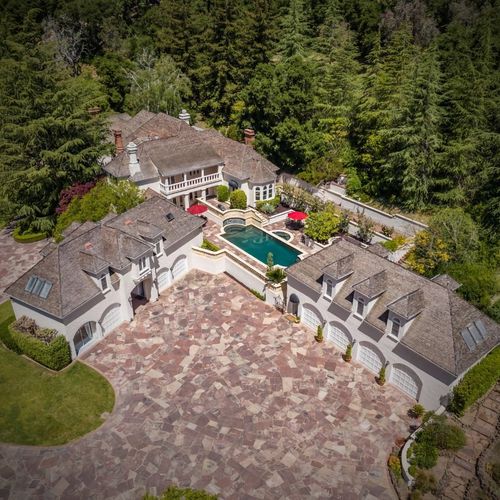For real estate investors, the 1031 exchange is a powerful tool that allows for the deferral of capital gains taxes when exchanging one investment property for another. But what if you want to convert a rental property into your primary residence after completing a 1031 exchange? While the IRS has specific rules about this, it is possible to legally transition a rental into your home while still maximizing your tax benefits. This article explains the IRS guidelines, key steps, and how to avoid costly tax consequences while making this transition.
The Basics of a 1031 Exchange
A 1031 exchange, named after Section 1031 of the Internal Revenue Code, allows investors to defer capital gains taxes when selling an investment property and purchasing another like-kind property. “Like kind” means any kind of real estate that is used to generate income – so you could sell a single-family residence you’ve held as a rental property and buy a gas station, or sell a motel and buy a luxury home on the coast. However, IRS rules dictate that both the relinquished and replacement properties must be held for investment or business use, meaning you can’t simply swap a rental for a primary home and expect tax deferral.
That said, with the right strategy and compliance, it is possible to convert the new rental property into your primary residence over time, effectively reducing or even eliminating capital gains taxes when you sell it later.
Example Scenario: A 1031 Exchange into a Future Primary Residence
Let’s consider an investor who has owned a rental property for 20 years and is now looking to sell it and buy a new home to live in using a 1031 exchange. Here are the key details:
- Original Purchase Price (20 years ago): $200,000
- Current Market Value: $1,000,000
- Replacement Property Price: $1,200,000
- Goal: Use a 1031 exchange to defer capital gains taxes and later convert the replacement property into a primary residence.
Step 1: Execute a Proper 1031 Exchange
To qualify for capital gains tax deferral, you must follow the standard 1031 exchange rules:
- Identify a Replacement Property Within 45 Days – After selling your rental, you have 45 days to identify up to three potential replacement properties.
- Close on the New Property Within 180 Days – You must purchase the replacement property within 180 daysof selling your old rental.
- Hold the New Property as a Rental for a “Qualified Period” – The IRS requires that you rent out the replacement property for a certain amount of time to prove it was acquired as an investment.
Step 2: Hold the Replacement Property as a Rental
To remain compliant with IRS rules, you cannot move into the replacement property immediately. Instead, you must rent it out for at least 2 years. This demonstrates that you acquired it as an investment property, which is a key requirement under 1031 exchange regulations.
During this period:
- Sign bona fide lease agreements with tenants.
- Report rental income and expenses on Schedule E of your tax return.
- Maintain landlord records (repairs, advertising, etc.) to reinforce the investment nature of the property.
Step 3: Gradual Transition to a Primary Residence
After holding the replacement property as a rental for at least 2 years, you may begin converting it into your primary residence. Here’s how:
- Move in and establish primary residency (change your address, register to vote, file taxes with the new address, etc.).
- Live in the home for at least five additional years (per IRS guidelines under the Housing and Economic Recovery Act of 2008).
Step 4: Selling the Property and Claiming the Section 121 Exclusion
Once you have lived in the property for at least five years, you may qualify for the Section 121 primary residence exclusion, which allows you to exclude up to $500,000 (married) or $250,000 (single) of capital gains. However, because the property was originally acquired through a 1031 exchange, you can only claim the exclusion for the portion of time it was used as a primary residence.
Can You Shield 100% of Your Capital Gains when You Later Sell the Primary Residence?
Sadly, no. You cannot entirely eliminate capital gains taxes in this scenario, but you can significantly reduce your taxable amount. Here’s how it works:
- The IRS uses prorated calculations based on how long the property was a rental versus a primary residence.
- Any depreciation recapture from the rental period must be paid upon sale (depreciation is taxed at 25%).
- The remaining capital gains are split into taxable vs. tax-free portions based on the ratio of rental years to primary residence years.
Example Tax Outcome
- You owned the original rental for 20 years and then the replacement property for 7 years (2 as a rental, 5 as a primary residence).
- That’s 27 years total, and 5 of those were as a primary residence.
- Tax-Free Portion: 5/27 of the gain ($800,000 gain) = ~$148,000 excluded under Section 121.
- Taxable Portion: The remaining capital gain (~$652,000) would be subject to long-term capital gains tax.
- Depreciation Recapture: If you had claimed $150,000 in depreciation over the years, you would owe taxes on this recapture at a 25% rate.
Can I Defer Paying Capital Gains Tax Indefinitely?
Yes, you defer capital gains taxes indefinitely while you own the property, and you only owe capital gains tax when you sell—unless you (or your spouse) pass away while still holding the property. In that case, your heirs will receive a stepped-up basis, potentially eliminating the capital gains tax entirely.
How Long Can You Defer Taxes?
Once you complete a 1031 exchange, rent the property for at least two years, and then move in to establish it as your primary residence, you will not owe capital gains tax until you sell.
- If you never sell, you never pay capital gains tax if you have first rented the property out for 2 years before moving in.
- If you pass the property to your heirs, they inherit it at a stepped-up basis, wiping out the deferred capital gains tax.
Yes. If you pass away while still owning the property, your heirs receive the property with a stepped-up basis to its fair market value at the time of your death.
For example:
- You originally purchased a rental for $200,000.
- You exchanged it via a 1031 exchange into a property now worth $1,200,000.
- When you pass away, the property is worth $1,500,000.
- Your heirs inherit the property with a new basis of $1,500,000.
- All prior deferred capital gains taxes disappear.
- If your heirs sell the home for $1,500,000 or less, they owe zero capital gains tax.
This is one of the most powerful tax advantages in real estate, allowing wealth to transfer to the next generation without triggering capital gains tax on past appreciation.
A Word about Property Tax
I think I must mention that if when you sell an investment property – whether via a 1031 exchange, or not – you lose that protected Proposition 13 tax basis forever. Exchanging a property via 1031 exchange will only defer capital gains tax payments – it does nothing for your California property tax assessed value. If you have held an investment property for 10, 20, 30 years or whatever, and you sell it and move the equity into a new property, that property will have a tax assessed value at fair market value at the time of purchase (that will almost always be the purchase price).
What Happens If You Move Into a 1031 Exchange Property Before Renting It for Two Years?
If you move into the property too soon (before renting it out for at least two years after a 1031 exchange), you risk violating IRS rules and may lose your capital gains tax deferral benefits.
1. IRS Safe Harbor Rule: Why Two Years Matters
The IRS has a safe harbor rule (Revenue Procedure 2008-16) that states a property must be rented for at least two years before you attempt to convert it into a primary residence. If you fail to meet this threshold, the IRS may argue that:
- You never intended to use the property as an investment.
- Your 1031 exchange was invalid, meaning you owe capital gains tax immediately from the sale of your relinquished property.
By renting the property for at least two years, you demonstrate a legitimate investment intent, which is a key requirement for 1031 exchange qualification.
2. What If You Move in Too Soon?
If you move in before the two-year rental period, the IRS can disqualify the exchange, meaning:
- Capital gains tax becomes due immediately on the sale of the original rental property.
- Depreciation recapture taxes (at 25%) are triggered on any depreciation claimed from the original rental.
- You may face penalties and interest for an improper 1031 exchange.
However, not all cases trigger disqualification—the IRS considers individual circumstances. If you moved in due to an unexpected life event (like a job loss or medical issue) and can justify it, you may still qualify, but it’s a risk.
3. Strategies If You Need to Move In Early
If you’re in a situation where you must move in before two years, consider:
- Renting it out for at least one full year before moving in (this still isn’t ideal, but it may help prove investment intent).
- Keeping strong documentation of your original intent to rent, including listings, leases, and property management records.
- Consulting a tax professional before making any move, as an IRS audit could result in significant tax consequences.
Is Moving in Before Two Years Worth the Risk?
No, it’s risky unless you have extraordinary circumstances. The safest strategy is to rent the property for at least two years, ensuring you fully comply with IRS guidelines before converting it into your primary residence.
Key Differences Between the IRS and California in Handling a 1031 Exchange to Primary Residence
- California’s “Clawback Rule” – If you exchange a California rental and later sell the replacement property in another state, California still taxes the deferred capital gain from the original sale. The IRS does not have this rule.
- Depreciation Recapture Tax – The IRS taxes depreciation recapture at 25%, while California taxes it as ordinary income (up to 13.3%).
- Capital Gains Exclusion (Section 121 Proration) – Both the IRS and California prorate the primary residence exclusion (only the years you lived in the home count toward the exclusion). However, California does not allow any exclusion for rental years after 2009—the IRS applies proration but doesn’t restrict older rental years as harshly.
- Tracking of 1031 Exchange Properties – California requires ongoing reporting (Form 3840) to track the status of exchanged properties, even if they leave the state. The IRS does not require this tracking once an exchange is completed.
- Tax-Free Step-Up in Basis – Both the IRS and California eliminate capital gains taxes if you die while holding the property, thanks to the stepped-up basis rule.
California is stricter than the IRS—it tracks 1031 exchanges more aggressively, taxes depreciation at higher rates, and ensures it collects capital gains tax even if you leave the state.
Final Thoughts
Converting a 1031 exchange property into a primary residence is a powerful tax strategy, but it requires careful planning and strict adherence to IRS regulations. By following the steps above, you can defer taxes now and reduce them later when you sell your home. However, it’s crucial to consult a tax professional before making any moves to ensure compliance and optimize your financial benefits.
Great Santa Clara Homes for Sale
2
3
4
5
6
7
8
9
10
11
12
13
14
15
16
17
18
19
20
21
22
23
24
25




